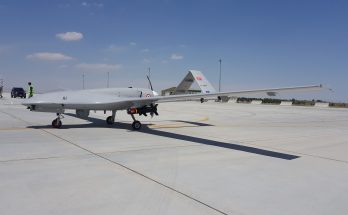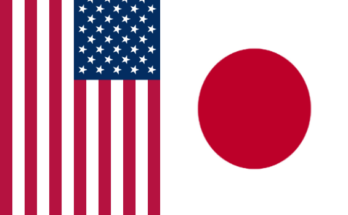by Dan Darling, International Military Markets Analyst, Forecast International.
As the center-right National Democratic Alliance government of Prime Minister Narendra Modi reaches its two-year anniversary in power, the financial strain on India’s armed forces is limiting the military’s capacity and hindering its short- and medium-term capability. The pressures converging on the armed forces – some self-inflicted – are forcing respective service branches to re-examine elements such as personnel ratios and budget management as the country’s national security approach continues to include the possibility of a two-front war with neighboring China and Pakistan.
For instance, Indian Army chief Gen. Dalbir Singh has reportedly ordered a study focusing on whether the 1.15 million-strong service might downsize the number of troops performing noncombat roles in order to reallocate some personnel costs (annual salary payments currently make up 55 percent of total defense expenditure) toward weapons acquisition. Realigning the military tooth-to-tail ratio (the ratio of combat versus non-combat support troops) is considered a potential long-term means of squeezing a bit more out of the budget in order to meet modernization requirements.
Where the Indian Air Force is concerned, the need to manage its own budget and pare down its list of requirements presents an immediate challenge. A slew of projects await contract signature, but pressures on the current fiscal year’s service budget mean these will suffer the inevitable delays that have plagued India’s defense procurement environment for decades. The Air Force is already short $1.13 billion in the equipment procurement portion (or Capital Head) of its budget, plus another $420 million to cover personnel costs and everyday expenses (the Revenue Head). Added to this fiscal imbalance is the depreciation of the Indian currency, the rupee, versus the U.S. dollar, which has the knock-on effect of mitigating India’s defense purchasing power on global markets.
Thus, much-needed projects like the re-engining of the Jaguar fleet, procurement of 56 C-295 transports to replace the 1960s-vintage Avro fleet, and joint production of the Russian Ka-226T light multimission helicopter to replace the aging and increasingly obsolete Cheetah and Chetak fleets are all being pushed to the right until the start of fiscal year 2016-17 next April 1, at the absolute earliest.
Current funding also ignores the emerging gap in combat aircraft capacity, for which the IAF faces a short- and medium-term crunch due to the phased withdrawal of its 14 MiG-21 and MiG-27 fighter squadrons and the ongoing inability to cement a deal – of any scope – with France for the acquisition of Rafales to meet a medium multirole fighter requirement. The longer-term requirement for the IAF is to field 45 fighter squadrons by 2023; currently it operates just 25 such squadrons, with many fighters in each of these suffering from serviceability shortcomings.
In regard to the Indian Navy, the service faces multiple challenges as it seeks to build on its blue-water capability development and provide India with a maritime arm that can project power across the Indian Ocean Region (IOR), an area increasingly serving as the primary global economic waterway. The latter has become a crucial national security issue due to the expansion of China’s geopolitical influence in the region and the growth of the maritime reach of the People’s Liberation Army Navy (PLAN).
That China has steadily built means on land (via the China-Pakistan Economic Corridor project, which is building a network of roads, pipelines and railways linking China to India’s arch-rival Pakistan) and at sea (through its String of Pearls network of maritime basing rights and facilities in the IOR) with which to circumvent India has no doubt left strategic policymakers in New Delhi uneasy.
Along with the country’s Air Force, Army Mountain Divisions, and tri-service Strategic Forces Command (responsible for managing India’s nuclear weapons inventory), the Indian Navy forms one of the core elements of India’s strategic hard power arm. Through port calls, inter-service training, and confidence-building gestures with various regional navies, the Indian Navy also provides a militarized form of soft power that bolsters Indian diplomacy. Furthermore, India conducts 75 percent of its foreign trade (by value) and imports 75 percent of its oil (with nearly all of it coming from the Middle East) by sea. This serves to heighten the importance of the naval arm from a national security perspective.
Therefore, the depletion of the Navy’s submarine arm down to an operational level of seven to eight vessels at any given time (out of a total current fleet of just 14) serves as a matter of immediate concern.
While much is being made of the start of sea trials for the Kalvari – the first of six new Scorpene-class (Project 75) diesel-electric submarines – on May 1, the reality is that the ship sailed without being armed with its primary weapon, the Black Shark torpedo (due to India’s blacklisting of Finmeccanica from its defense market in the wake of the VVIP helicopter bribery scandal). Worse, a decision on a torpedo to replace the previously selected Black Shark has yet to be made, meaning that a solution via the laborious Indian tendering process would still be five years out –at the earliest – from the point of project launch.
Meanwhile, the remaining five submarines are not slated for handover to the Indian Navy until at least 2020. A follow-on project involving the procurement of six nuclear-powered submarines (SSNs) – the so-called Project 75I being pursued under the Modi government’s “Make in India” industrial policy – was cleared by the Defence Ministry in 2007, but has yet to gain any traction beyond the MoD’s casting about for foreign partners for projects at local shipyards.
The lone bright spot in the Navy’s submarine modernization efforts is the impending arrival of India’s first indigenous nuclear-powered ballistic-missile submarine (SSBN), the 6,000-ton INS Arihant. This submarine will be followed by four more vessels (the final model being an improved variant), tentatively scheduled for handover through 2027.
In terms of surface combatants, the Indian Navy is making some relative progress. New ships are coming on line in the form of Project 17 frigates and Project 15 destroyers being produced at Indian shipyards. But more needs to be done in order to transform the Navy into the multidimensional force it seeks to become in order to exert itself in the brown water littorals as well as across the greater Indian Ocean Region.
The Navy’s long-standing goal has been to field 198 ships compromising three Carrier Battle Groups by 2027, replete with combat aircraft (MiG-29Ks) and helicopters (Kamov‑28s and Kamov-31s) deployed from the decks of aircraft carriers and supported with P-8I maritime reconnaissance aircraft.
As of the first quarter of 2016 the Indian Navy possessed 137 warships, but many of these are old and obsolete. As a means of replacing these, some 47 warships (including one aircraft carrier, seven frigates, six destroyers and six submarines) are currently on order or under construction at domestic shipyards. A new first-in-class carrier, INS Vikrant (Courageous), is expected to be inducted into service sometime in 2018-2019. But a project to build a second indigenous carrier, IAC-II, is still in the early selection stage and is unlikely to result in delivery of a new carrier in less than 10-12 years.
Finally, there is the Indian Army, whose ongoing effort to raise a new mountain strike corps is struggling due to funding pressures that have forced the service to draw money from its fast-depleting war wastage reserves (reserves set aside for use in the event of an outbreak of conflict). This corps is to be added to the Army’s three other such strike corps. However, unlike the other three, which are equipped primarily for engaging Pakistani forces, the new 17 Mountain Strike Corps is specifically designed for mountain warfare, with countering China the operational aim.
Established in July 2013 by the previous Congress-led (UPA-II) government, the corps was envisioned with a total troop strength of 90,274 soldiers filling two infantry divisions, two independent infantry brigades and two independent armored brigades, plus supporting elements. But the force instead saw its budget frozen by Defense Minister Manohar Parrikar out of concern that funding its creation placed undue pressure on the larger topline defense budget. This essentially halved the eight-year allocation initially laid out for the 17 Mountain Strike Corps and threatens to shrink its overall size. Of the total 250 headquarters and units to be raised for this corps, only around 90 have been established to date.
The troubles encountered in raising the mountain strike corps merely underline the Army’s larger woes, including its reduced size, lack of crucial new equipment, and crippling ammunition shortages which have reportedly left it unable to fight a war beyond 15-20 days. The Indian Army today finds itself deficient across the equipment spectrum, being short of bulletproof jackets, night vision goggles, small arms, and artillery pieces. Despite a $5-$7 billion Field Artillery Rationalization Plan introduced in 2000, the Indian Army has not brought a new artillery piece into service since 1986. This latter aspect speaks volumes about the overall struggle in modernizing the Indian armed forces.
Altogether the picture presented is one of a military pressed to provide the semblance of a growing regional and international power, but stressed at multiple points. The Modi government’s efforts to wean the Indian armed forces off their import dependency and bolster local industry to the point that it can provide more of its military hardware requirements only push the modernization timeline back further.
The crucial question thus becomes whether over the course of that elongated modernization timeline, India’s South Asian neighborhood will remain a relatively peaceful one.
Please feel free to use this content with Forecast International and analyst attributions, along with a link to the article. Contact Ray Peterson at +1 (203) 426-0800 or via email at ray.peterson@forecast1.com for additional analysis.
The Forecast International International Military Markets series examines the military capabilities, equipment requirements, and force structures inventories of 140 countries, with corresponding coverage of the political and economic trends shaping the defense market outlook for individual countries and regions.
For 50 years, Forecast International intelligence reports have been the aerospace and defense industry standard for accurate research, analysis, and projections. Our experienced analysts compile, evaluate, and present accurate data for decision makers. FI's market research reports offer concise analysis of individual programs and identify market opportunities. Each report includes a program overview, detailed statistics, recent developments and a competitive analysis, culminating in production forecasts spanning 10 or 15 years. Let our market intelligence reports be a key part of reducing uncertainties and mastering your specific market and its growth potential. Find out more at www.forecastinternational.com




